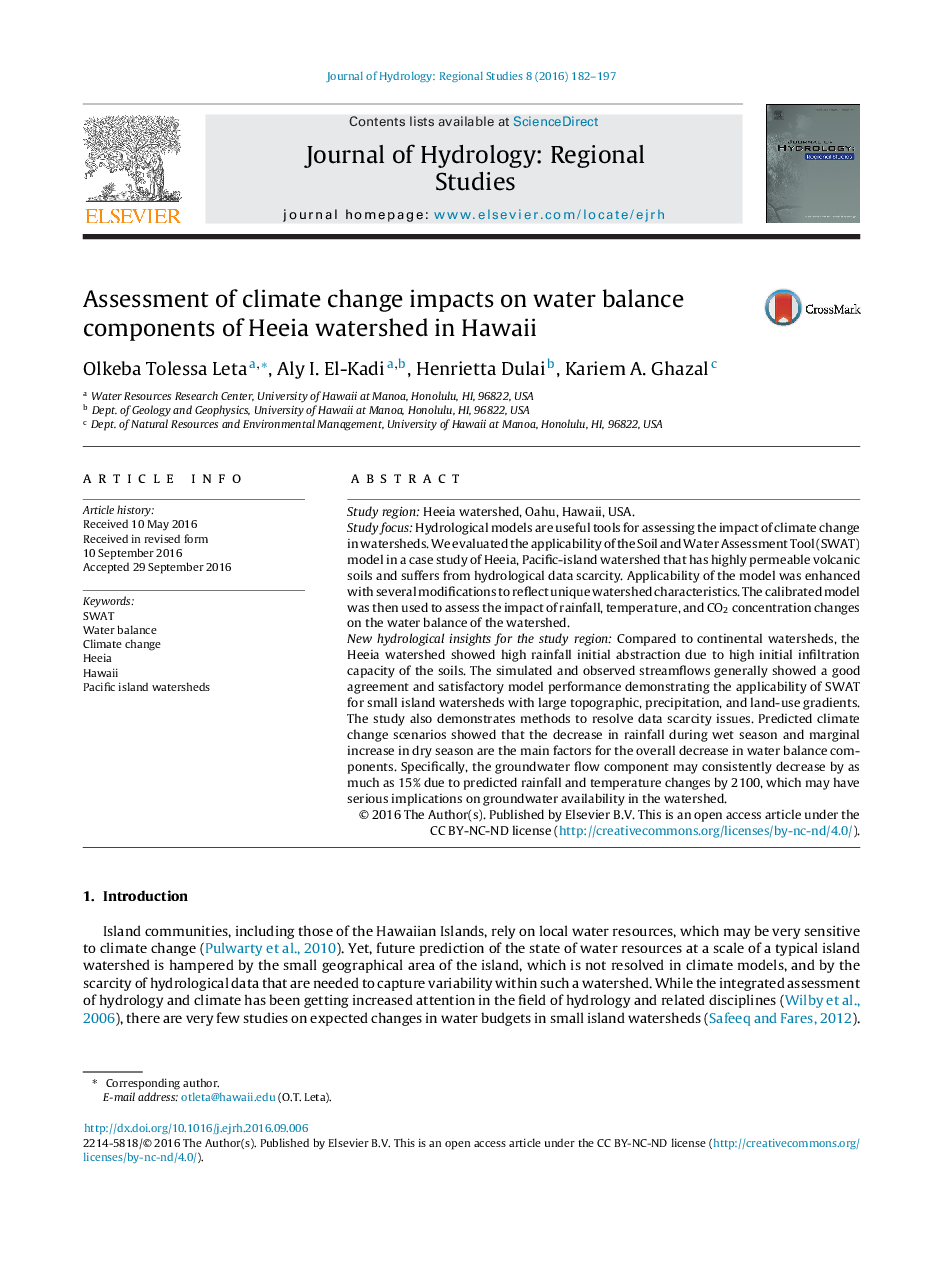| کد مقاله | کد نشریه | سال انتشار | مقاله انگلیسی | نسخه تمام متن |
|---|---|---|---|---|
| 4435073 | 1620137 | 2016 | 16 صفحه PDF | دانلود رایگان |
• Initial abstraction of Heeia watershed is relatively larger than continental watersheds.
• Accounting for rainfall variability is of paramount importance for small-scale watershed.
• SWAT model and volcanic soil characteristics adaptation improves model performance.
• Water budget components of Heeia watershed projected to overall decrease in the future.
• Baseflow is more negatively affected to climate change compared to other water budgets.
Study regionHeeia watershed, Oahu, Hawaii, USA.Study focusHydrological models are useful tools for assessing the impact of climate change in watersheds. We evaluated the applicability of the Soil and Water Assessment Tool (SWAT) model in a case study of Heeia, Pacific-island watershed that has highly permeable volcanic soils and suffers from hydrological data scarcity. Applicability of the model was enhanced with several modifications to reflect unique watershed characteristics. The calibrated model was then used to assess the impact of rainfall, temperature, and CO2 concentration changes on the water balance of the watershed.New hydrological insights for the study regionCompared to continental watersheds, the Heeia watershed showed high rainfall initial abstraction due to high initial infiltration capacity of the soils. The simulated and observed streamflows generally showed a good agreement and satisfactory model performance demonstrating the applicability of SWAT for small island watersheds with large topographic, precipitation, and land-use gradients. The study also demonstrates methods to resolve data scarcity issues. Predicted climate change scenarios showed that the decrease in rainfall during wet season and marginal increase in dry season are the main factors for the overall decrease in water balance components. Specifically, the groundwater flow component may consistently decrease by as much as 15% due to predicted rainfall and temperature changes by 2100, which may have serious implications on groundwater availability in the watershed.
Journal: Journal of Hydrology: Regional Studies - Volume 8, December 2016, Pages 182–197
